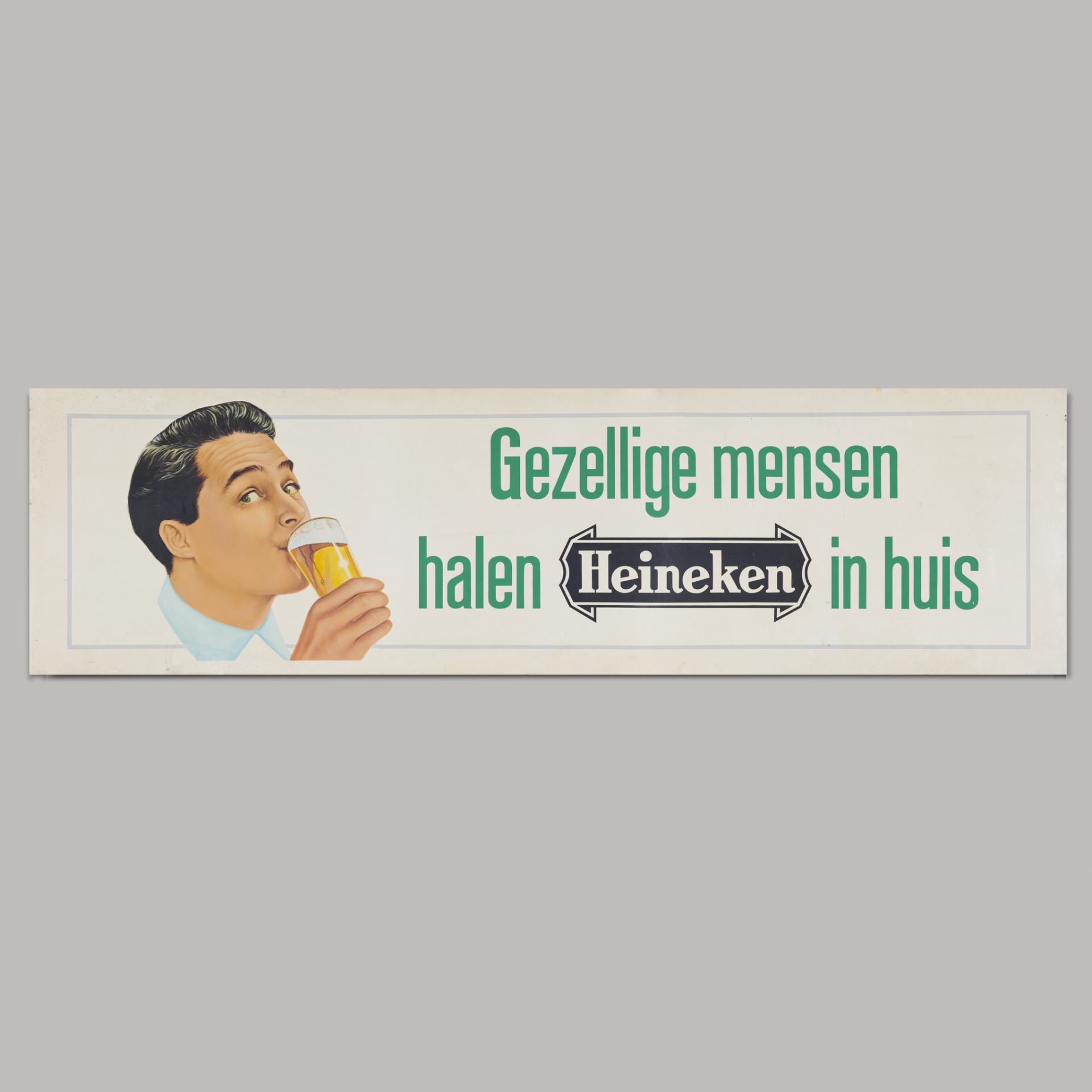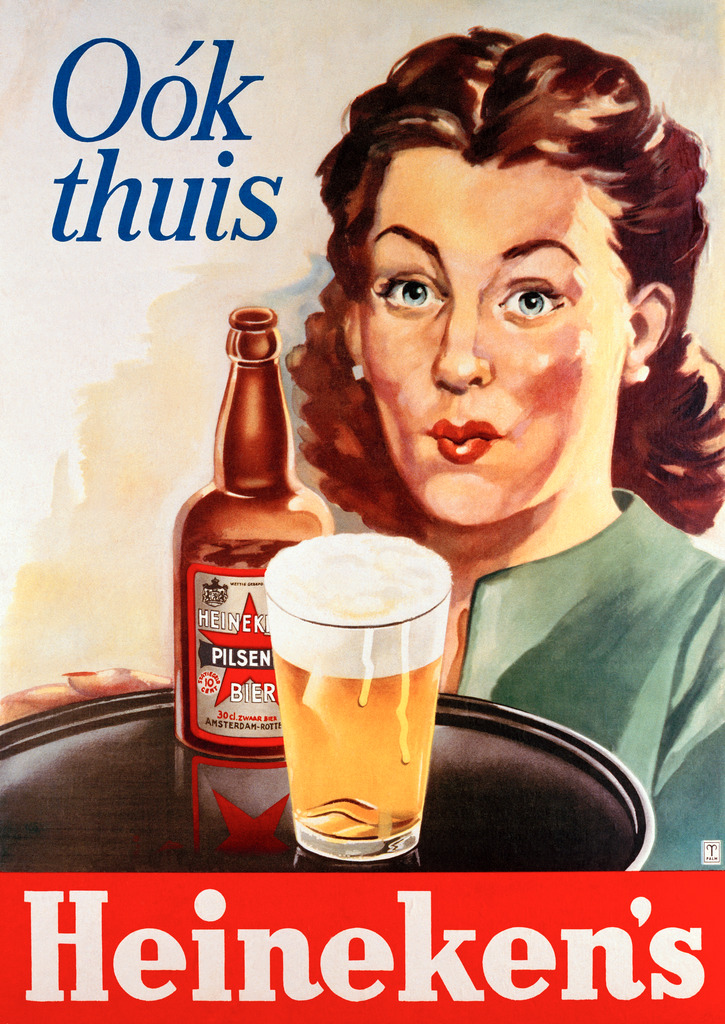INFO
Billboard ‘Cordial people bring Heineken home’
1966 - 1969
Plywood, paint, wood
h 101 x w 353 x d 3.2 cm

Cordial people
In the early 20th century, drinking pilsner was still a genteel affair. City dwellers who could afford it would order a Heineken in one of the chic grand cafés, on tap or from the bottle. At the time, Heineken consumer advertising was therefore mainly aimed at boosting beer sales through the on-trade. Liquor stores also sold bottled beer, but home consumption was not yet a reality.
That changed around 1930, when Heineken decided to launch an advertising campaign specially for home consumers. Via tasteful showcards on the counter of the off-licence establishments and newspaper ads, the brewer emphasised the advantages for the beer drinker: the comfort of the home environment, where the lady of the house would serve up a tall glass of lager along with the newspaper and slippers after a long working day. An image that many people now cannot imagine.

Good cheer
When Heineken beer returned to full strength after the Second World War – having been relegated to a bland, inferior brew during the war years – Heineken campaigns focussed even more strongly on home consumption and the accompanying, typical Dutch good cheer. From the 1950s, beer was no longer available exclusively at off-licences, but also at grocery shops. New forms of advertising emerged, aimed at persuading housewives to put some bottles of beer in their shopping bag.
Temptation
That temptation became even more important with the arrival of the first supermarkets. This American trend started in the Netherlands in 1946 with the first self-service shop in Nijmegen, followed by Dirk van den Broek in Amsterdam (1948) and the Kijkgrijp in Velsen-Noord (1949). This concept called for a totally new shop layout, with product promotion aimed directly at the customer. Previously, the grocer could still steer the shopper, asking ‘will there be anything else?’ and making a suggestion; from then on advertisements had to fulfil that role. Between the aisles of shelves bulging with products, displays with brightly coloured text boards competed for the housewife’s attention.
Advertising painters
At many converted convenience shops, the traditional display windows were (partly) covered over with advertising signs, to hide the shop layout and stock from view. This created work for many advertising painters, such as Rotterdam-based Piet Cottaar, who was employed by Heineken Rotterdam. Here we see an early example of such an oblong sign for Heineken beer from a grocery shop in Amsterdam Oost. The billboard’s message must have struck a chord; after all, who would want to seem like an uncongenial person?